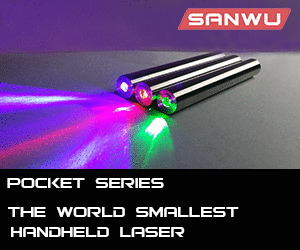- Joined
- Aug 6, 2010
- Messages
- 382
- Points
- 0
gillza & comradmax,
I've been confused on the LM317 issue too till now. Not from Rafa's post, it actually clarified it for me. The regulator is being used for a current regulator not a voltage regulator. To run the LD you need enough voltage for the LD and be above the dropout regulator voltage. The 1.25v is a reference voltage needed and its not the same as the regulators operational voltage. To make it work you have to have a voltage at or above the LD & regulators needs. Using the LM1117 with a drop out of 1.1v + the LD's needs of 2.2v totals 3.3v to work. So a single Li-Ion 3.6v(4.2 off the charger) works. If you used a LM317 with a dropout voltage of 2.2v, add that to the 2.2v for the LD and now you need a min of 4.4v so a single cell won't work. You need 2 cells and that with Li-Ions is going to be 7.2v(8.4v off the charger). That would work with the LM317, but the trade off is all the excess voltage is converted into heat that has to be dealt with. 2 3v CR2's would be a better choice. I was always adding the 1.25v reference voltage into the total needed. If this is wrong, someone please correct me.
I've been confused on the LM317 issue too till now. Not from Rafa's post, it actually clarified it for me. The regulator is being used for a current regulator not a voltage regulator. To run the LD you need enough voltage for the LD and be above the dropout regulator voltage. The 1.25v is a reference voltage needed and its not the same as the regulators operational voltage. To make it work you have to have a voltage at or above the LD & regulators needs. Using the LM1117 with a drop out of 1.1v + the LD's needs of 2.2v totals 3.3v to work. So a single Li-Ion 3.6v(4.2 off the charger) works. If you used a LM317 with a dropout voltage of 2.2v, add that to the 2.2v for the LD and now you need a min of 4.4v so a single cell won't work. You need 2 cells and that with Li-Ions is going to be 7.2v(8.4v off the charger). That would work with the LM317, but the trade off is all the excess voltage is converted into heat that has to be dealt with. 2 3v CR2's would be a better choice. I was always adding the 1.25v reference voltage into the total needed. If this is wrong, someone please correct me.






